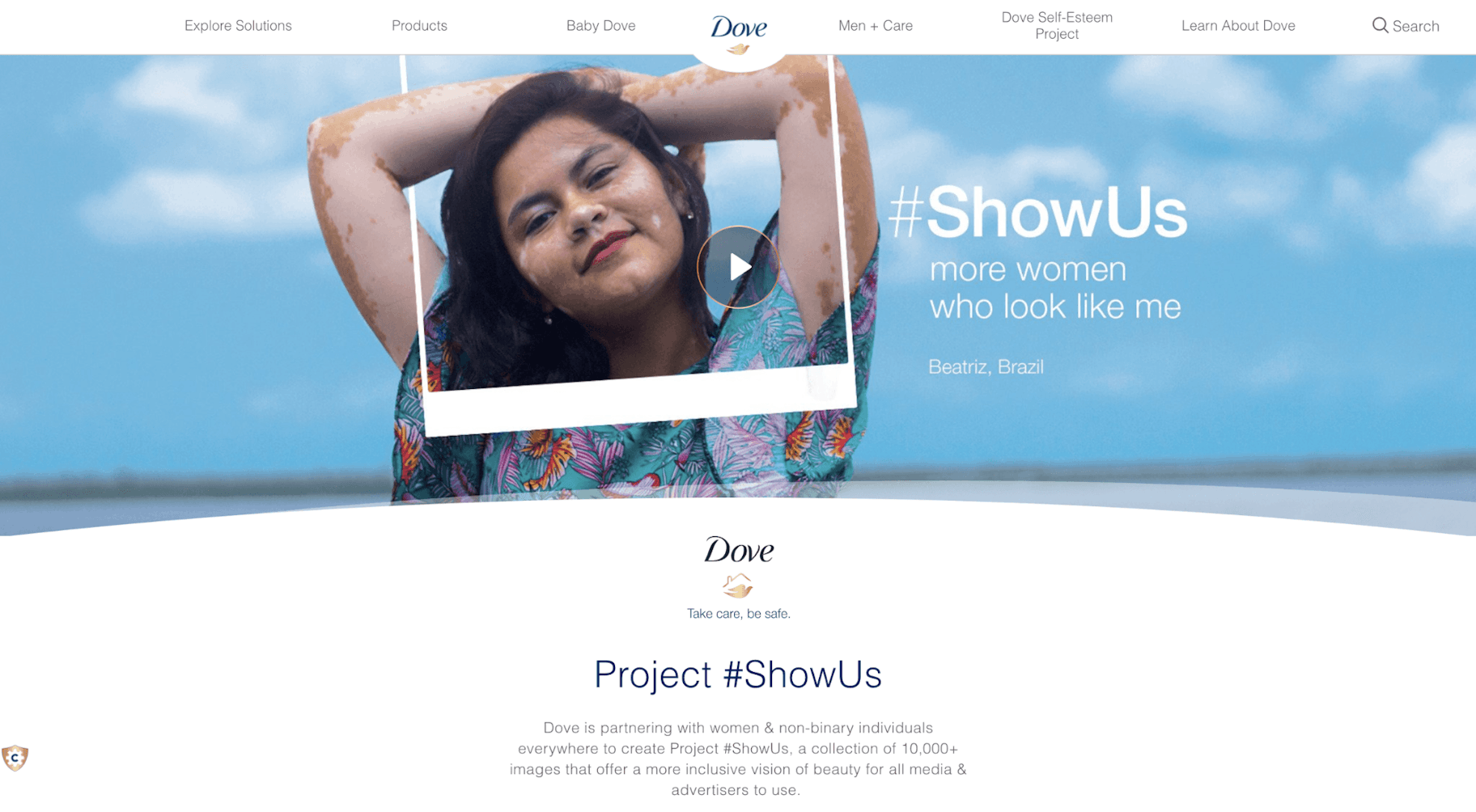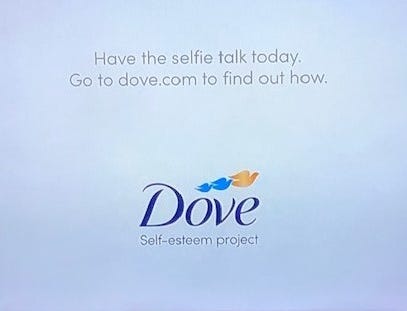
Dove’s Best Digital Marketing Strategies & Campaigns
Dove Marketing Campaigns
Dove has expanded its product range over the years to include shampoos, conditioners, body washes, moisturizers, deodorants, facial skincare. And self-tanning products along with a separate line aimed at the male beauty and skincare market. In 2021, the Dove brand was valued at approximately $5.1 billion U.S. dollars and it digital marketing campaigns have won prestigious awards on both a national and global level over the last 15 years.
Always innovative and courageous, Dove sells more than beauty – it invites its customers and fans to reflect on self-esteem and self-acceptance. This concept might seem to be a direct contradiction. Given that the majority of beauty-based advertising is about fixing or hiding personal imperfections. However, Dove makes it work.
Best Digital Marketing Strategies & Campaigns
Collaborate With the Unexpected, Such as Stock Photo Companies
Continuing its efforts on changing beauty standards in digital media, Dove released project #ShowUs that supports diversity and exclusivity at the same time.
In partnership with digital photo company Girlgaze and Getty Images, Dove has collected about 5,000 images on GettyImages.com. The project features 179 women from 39 countries. And the photographed talents include plus-size, trans, diverse women and women with skin conditions. The good part is, they were also shot by 116 female-identifying photographers within the Girlgaze network.
Create An Unlimited Target Audience
Dove has once announced a two-year global partnership with the Cartoon Network series “Steven Universe” to educate young people on body confidence as part of its Self-Esteem Project.
With a unique Self-Esteem Project, Dove has been encouraging young people to build self-esteem and body confidence through educational since 2004.
Use the Power of Media–In Charge of the Company
To break the unrealistic image of women portrayed in digital media, Dove and Mindshare Denmark have teamed up to create an amazing campaign called Image_Hack.
As a prominent brand in the beauty industry, Dove plays a part in gender presentations in the media. So, they made a case study to show how they break the negativity chain that women encounter in the media. When media uses images that don’t reflect society, images that portraits women as objects, they dictate unrealistic ideals.
Dove Latest Campaign
The latest Dove campaign is rooted in a survey. It found 80% of Canadian girls have downloaded a filter. Or used an app to change their appearance in selfies by age 13. About two-thirds (67%) of girls ages 10 to 17 have tried to change or hide at least one bodily feature before posting a photo online. While 59% of girls who are insecure about their bodies regularly distort pictures before sharing them on social media. In addition, 37% of survey respondents said they don’t look good enough without any photo editing.
Girls said they would feel more confident if images on social media more accurately reflect the way they look in real life. With 67% agreeing that they wouldn’t feel judged and 66% saying they would be less worried about their appearance. Sixty-three percent of girls said they wished the world would focus on who they are as people rather than what they look like. The study findings indicate that girls need help in using social media “in a positive way. Making it more about self-expression and less about validation,” according to Dove.
With 30% of parents saying they have talked to their kids about the pressures of social media marketing. Dove aims to motivate more people to have those discussions with its online “confidence kit.” The 32-page booklet outlines how children who spend the most time on social media tend to feel worse about themselves. And how parents and teachers can initiate a “selfie talk” to urge kids to turn social media into a more positive experience. The tips include steps such as unfollowing accounts that don’t make them feel good. And using the privacy features on apps like Instagram.


